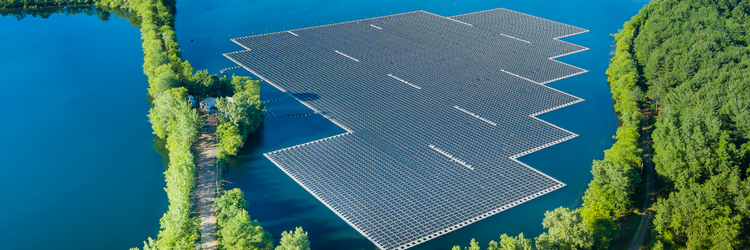As we stretch electrical grids across the U.S. and Europe to their maximum capacities and the price of electricity, along with fuel oil, continues to rise, solar energy advances bring hope for a more sustainable – and affordable – future.
This article will explore 5 advances in solar energy that could reduce costs and improve efficiency, if not next year, then in the near future.
What viable advances can we expect to make solar more affordable to businesses and individuals?
Solar Cells with Nearly 40% Efficiency
One of the key stumbling blocks to solar adoption has been the efficiency of photovoltaic arrays. According to National Renewable Energy Laboratory data reported by Solar Reviews, most solar panels today have an average efficiency rating of 19%, with some PV arrays getting as high as 20% efficiency.
But new technology could nearly double that number to 39.5% under natural light conditions. This advancement would make solar panels perfect for smaller spaces, where you need small panels but a lot of electricity. Businesses could also use cells in low-radiation space applications where the sun is not giving off as much energy. In this environment, they show an efficiency of 34.2%.
The technology works through an inverted metamorphic multijunction architecture, where each junction of the IMM device is tuned for different wavelengths of solar, enabling the panel to use more of what it absorbs, according to a study published in Joule.
Perovskite-Based Solar Voltaics
The materials used in solar PV arrays play a considerable role in their efficiency and durability. Previously, researchers explored using perovskite crystal instead of silicon in PV arrays. But perovskite turned out to be “prohibitively fragile” and didn’t last as long as silicon, according to AZOCleanTech.com.
However, Princeton University engineers have recently developed perovskite solar cells that are highly durable and may even last a decade longer than today’s silicon-based cells, which have 20 years of usefulness. The engineers treat the crystals with an accelerated aging technique that enhances their durability and flexibility while maintaining efficiency. They also require less energy to produce These flexible crystals could be deployed in applications calling for curved, arched, or domed arrays, which could revolutionize green architecture.
Solar Fabrics
Aesthetics creates substantial stumbling blocks when installing solar power in residential and commercial buildings. The development of solar fabrics, however, could overcome this challenge by making it possible to install energy-generating building facades, awnings, and curtains. Solar textiles would substantially reduce the cost of solar installation, making “going solar” as simple as hanging curtains in a high-rise apartment or office building.
Solar Panels That Work at Night
The sun’s energy heats the Earth during the day. But, at night, much of that thermal energy is lost to the atmosphere. Promising research out of UNSW Sydney, Australia, showcases a prototype device that can absorb thermal energy typically lost at night and convert it into electricity. The device uses a thermo radiative diode to capture infrared energy, similar to the way night vision works.
Floating Solar Farms
Community-based solar projects often face problems finding locations to install arrays. Floating solar farms solve this problem while also providing water management benefits. Floating solar farms are already in use worldwide, but not to the extent they could be. According to WeForum.org, if developers cover just 10% of hydropower reservoirs with solar panels, it could produce as much electricity as currently provided by fossil fuel plants around the world.
Floating solar farms also help reduce water loss caused by evaporation and can reduce water treatment costs by blocking algae growth. The water also helps keep the solar panels clean and running at top efficiency.
Final Take
With the Biden Administration’s goal of producing 100% carbon pollution-free electricity by 2023, and net-zero emissions buildings by 2045, solar technology must advance to help achieve these goals. Making solar more efficient, affordable, and streamlined to meet aesthetic expectations will play an essential role in meeting that nation’s long-term sustainability goals.

